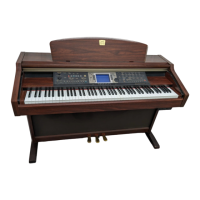
Do you have a question about the Yamaha Clavinova CVP-206/204 and is the answer not in the manual?
| Number of Keys | 88 |
|---|---|
| Polyphony | 64 |
| Touch Sensitivity | Hard, Medium, Soft, Fixed |
| Sound Source | AWM (Advanced Wave Memory) |
| Effects | Reverb, Chorus, DSP |
| Sequencer | 16-track |
| Display | LCD |
| Speakers | 16cm x 2 + 5cm x 2 |
| Connectivity | Headphones x 2 |
| Keyboard | GH (Graded Hammer) Keyboard |
| Amplifiers | 40W x 2 |
Explains safety graphics and markings on Yamaha electronic products. Please observe all cautions.
Information on the product's small non-rechargeable battery and its replacement.
All Yamaha electronic products are tested by an independent safety lab. Do not modify the unit.
Indicates the location of the name plate for model, serial number, and power requirements.
Essential precautions to avoid serious injury or death from electrocution, short circuits, damage, fire.
Precautions to avoid personal injury, instrument damage, or damage to surrounding equipment.
Provides an overview of the manual's structure and recommends reading it before use.
Explains basic operations and functions of the instrument.
Detailed explanations on various Clavinova functions and settings.
Contains complete instructions for operating the Clavinova.
Contains lists of voices, styles, parameters, etc.
Guidelines for handling disks and the drive with care.
Step-by-step instructions on how to insert and eject a floppy disk.
Instructions on how to clean the read/write heads of the disk drive.
Explanation that the Clavinova does not require tuning like an acoustic piano.
Guidelines for moving and transporting the Clavinova safely.
Enjoy a variety of pre-recorded songs and commercially available disks.
Learn and practice with guide functions for playing music.
Discover instrument features and functions through demonstrations.
Perform with automatic accompaniment in various musical genres.
Record your performances and create complete compositions.
The large LCD display and buttons provide comprehensive control over the Clavinova.
Finds the most suitable accompaniment parameters for your songs.
Connect to a computer for music playback and management.
Explore a wide variety of realistic instrument voices.
Instructions for opening and closing the keyboard cover.
Instructions for setting up the music stand.
Details on the crochets used to hold sheet music on the music stand.
Connect headphones to the PHONES jack for private listening.
Learn how to play songs using the demonstration functions.
Combine voices, effects, rhythms, and styles to create your own songs.
Explore and learn to use the instrument's extensive voice library.
Enrich your performance with automatic accompaniments.
Automatically sets appropriate parameters for songs.
Practice and improve your playing with various exercise functions.
Information on the main screen layout and its functions.
Adjusts the pitch of the keyboard, songs, and accompaniment.
Information on currently selected songs and playback position.
Stores and recalls custom panel settings.
Manage song, voice, style, and registration files.
Organize and manage files on internal memory and floppy disks.
Learn to name, copy, move, and delete files and folders.
Access and edit voice parameters like PIANO, COMMON, SOUND, EFFECT, HARMONY.
Detailed steps for editing voice parameters like FILTER, EG, and VIBRATO.
Learn methods for recording songs in real-time or step-by-step.
Easily record and play back piano performances.
Record songs with multiple instrument sounds for a full orchestral effect.
Create songs by entering notes one by one, separately recording chords and melodies.
Record chord changes for automatic accompaniment step-by-step.
Modify recorded song data using Quantize, Velocity, Copy, Delete, and Mix functions.
Learn about style creation, combining rhythms, basses, and chord patterns.
Create custom styles by recording in real-time.
Create style patterns by inserting notes and data individually.
Information on the Style File Format (SFF) for automatic accompaniment.
Tools to modify the rhythmic feel and dynamics of created accompaniment styles.
Edit channel data, including Quantize and Velocity.
Total control over sound using the mixing console interface.
Adjusts volume and voice balance for each part or channel.
Adjusts voice timbre by accentuating or cutting frequencies.
Adjusts pitch and transposition for voices.
Define and adjust effects like Reverb, Chorus, and DSP.
Access advanced instrument functions for personalization.
Adjust overall instrument pitch and select tuning scales.
Define settings for song playback and repeat functions.
Configure accompaniment settings and define split points.
Assign functions to pedals for enhanced control.
Configure MIDI transmission, reception, and system settings.
Adjust screen contrast, metronome, parameter lock, and tap tempo.
Connect headphones for private listening.
Connect a microphone or guitar for performance accompaniment.
Connect to external audio systems and video displays.
Connect MIDI devices and computers for music production.
Explanation of MIDI and its role in electronic musical instruments.
Information on MIDI file formats like SMF, ESEQ, XF, and DOC.
Important safety warnings and assembly instructions.
Instructions for attaching the side panels to the pedal unit.
Steps for attaching the rear panel to the main unit.
Instructions for safely mounting the main unit.
Important safety warnings and assembly instructions.
Instructions for attaching the side panels to the pedal unit.
Steps for attaching the rear panel to the main unit.
Instructions for safely mounting the main unit.
FCC compliance information for the product in the USA.
Important information regarding plug and cord connection for UK users.

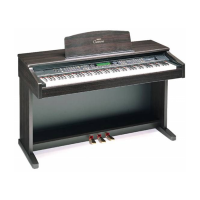
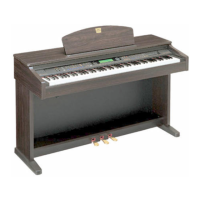
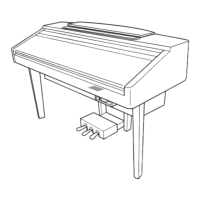

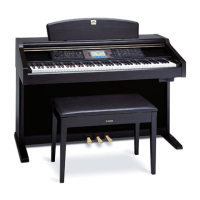

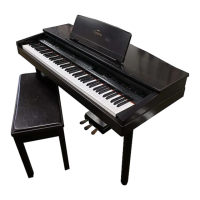

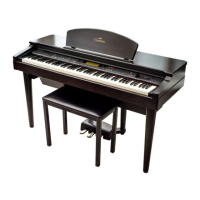
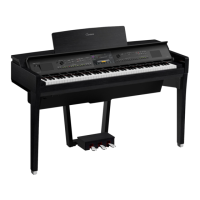
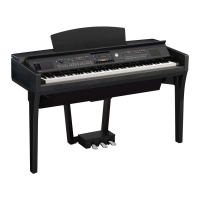
